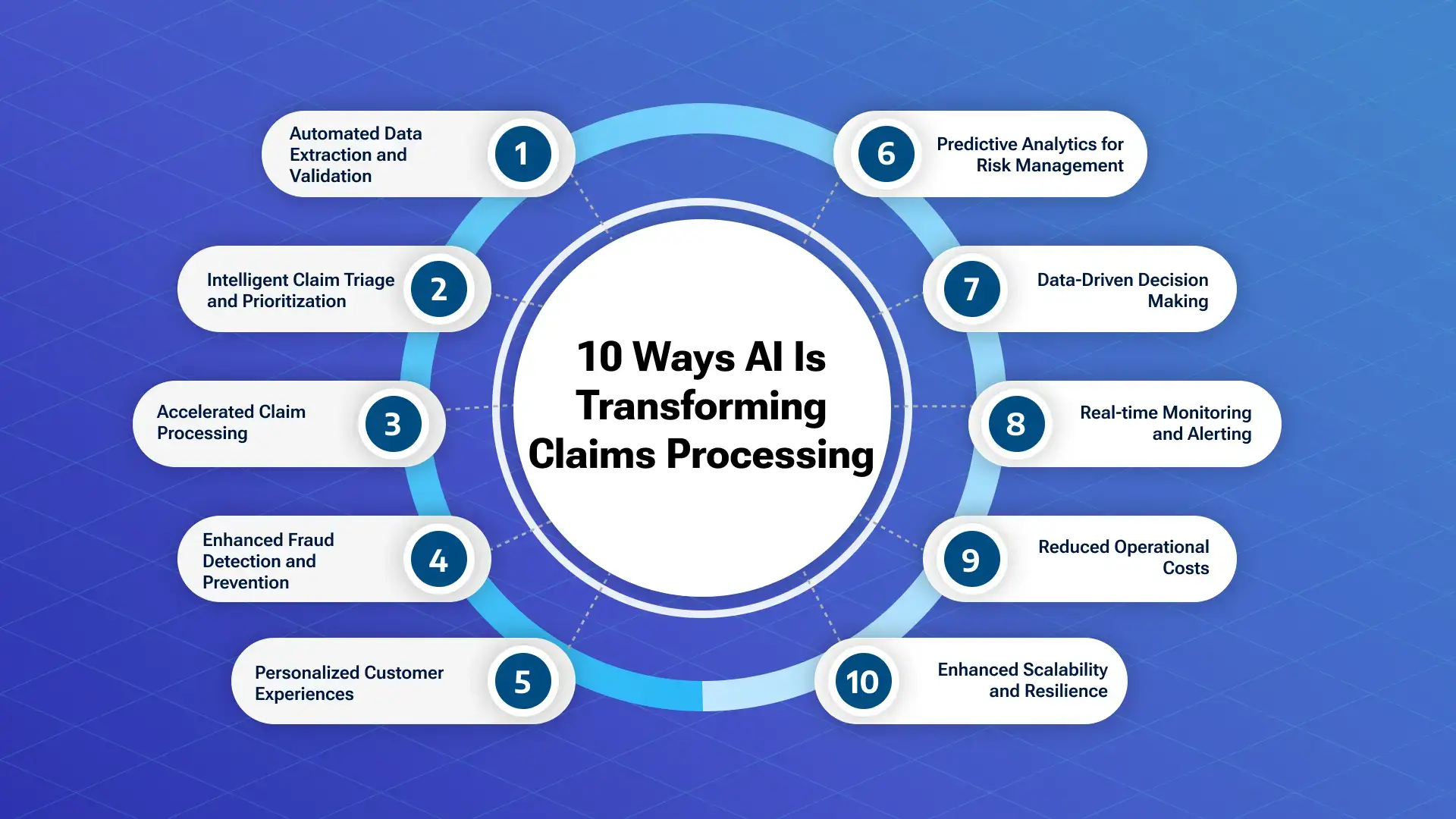
The Role of AI in Enhancing Auto Insurance Claims Processing
In a world where speed and accuracy define customer satisfaction, the auto insurance industry is undergoing a transformation—one driven by artificial intelligence (AI). Once bogged down by lengthy paperwork, human errors, and fraudulent claims, the claims process is now evolving into something faster, smarter, and more reliable.
But how exactly is AI reshaping the way auto insurance claims are handled? From streamlining claims approvals to detecting fraud, AI is not just a technological upgrade; it’s a game-changer.
Let’s explore how AI is revolutionizing claims processing, improving efficiency, and protecting both insurers and policyholders from unnecessary losses.
1. Faster Claims Processing: From Weeks to Hours
Traditionally, filing an insurance claim could take weeks or even months, involving a tedious back-and-forth between policyholders, adjusters, and repair shops. AI is dramatically reducing this timeline.
How AI Accelerates Claims Processing
- Automated Damage Assessment: AI-powered image recognition tools analyze accident photos within seconds, providing an instant damage estimate. Companies like Tractable and CCC Intelligent Solutions use AI to assess vehicle damage without human intervention.
- Chatbots & Virtual Assistants: AI-driven chatbots handle initial claim filings, collect necessary details, and guide customers through the process—24/7, without the need for human representatives.
- Instant Policy Verification: AI cross-references customer information, past claims history, and policy details in real-time, reducing the manual workload for adjusters.
2. AI-Powered Fraud Detection: Stopping Scammers in Their Tracks
Fraudulent claims cost the insurance industry billions of dollars annually. AI’s ability to detect patterns and anomalies is revolutionizing fraud prevention.
How AI Detects Fraudulent Claims
- Pattern Recognition: AI scans thousands of claims to identify suspicious behaviors, such as repeat claims, exaggerated damages, or inconsistencies in reports.
- Voice & Text Analysis: AI-powered tools analyze voice recordings and text statements for deception patterns. If an insured individual gives conflicting information across multiple interactions, AI flags it for further investigation.
- Location & Telemetry Data: By leveraging GPS and telematics, AI can verify if an accident happened where and how the claimant describes it.
3. Telematics & Personalized Claim Handling
The rise of telematics (real-time driving data collected via connected devices) is reshaping the way auto insurers assess risk and claims. AI processes this data to personalize claim outcomes based on actual driving behavior rather than general risk assumptions.
How AI & Telematics Improve Claims
- Accident Reconstruction: AI uses telematics data to reconstruct accident scenarios, helping insurers determine who was at fault with greater accuracy.
- Usage-Based Insurance (UBI): AI assesses real-time driving habits—such as speeding, braking, and time of day driving—to personalize premiums and ensure fairer claims settlements.
- Immediate Crash Detection: AI can detect crashes in real time and automatically alert emergency services and insurers, leading to faster response times.
4. AI-Driven Predictive Analytics: Anticipating Claims Before They Happen
AI isn’t just reactive—it’s proactive. Insurers are now using predictive analytics to forecast potential claims and prevent losses before they occur.
How Predictive AI Works
- Identifying High-Risk Drivers: AI flags policyholders who exhibit risky driving behaviors and alerts insurers about potential future claims.
- Weather & Traffic Predictions: AI analyzes weather data and road conditions to warn drivers about hazardous conditions, potentially preventing accidents.
- Proactive Maintenance Alerts: AI notifies vehicle owners of mechanical issues before they lead to accidents, reducing the likelihood of claims.
5. AI-Powered Customer Experience: A Smoother Claims Journey
AI isn’t just benefiting insurers—it’s enhancing the customer experience by making claims processing faster, more transparent, and hassle-free.
How AI Improves Customer Satisfaction
- Instant Communication: AI-driven chatbots and virtual assistants provide real-time updates on claim status, eliminating the frustration of long hold times.
- Self-Service Options: Policyholders can use AI-powered mobile apps to upload accident photos, receive repair estimates, and track their claims without speaking to an agent.
- Fairer Settlements: AI ensures that claim evaluations are based on real data, reducing disputes and making the process more transparent and trustworthy.
Final Thoughts: The Future of AI in Auto Insurance Claims
The integration of AI in auto insurance claims processing is no longer a futuristic concept—it’s happening now, and it’s revolutionizing the industry. By speeding up claims, detecting fraud, leveraging real-time driving data, and enhancing customer experience, AI is making insurance smarter, faster, and more reliable.
As AI continues to evolve, expect even greater innovations that will further streamline processes, reduce costs, and ensure fairer outcomes for both insurers and policyholders. The future of auto insurance? It’s not just digital—it’s intelligent.